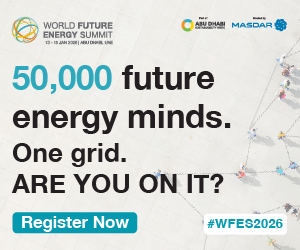Post - Blog
Smarter homes are key to achieving grid flexibility and net zero targets
- 2 years ago (2022-12-14)
- Junior Isles

By Ed Gunn, Commercial Director at Lunar Energy

WFES 2026 (World Future Energy Summit)
The UK’s energy system is in a period of upheaval. Heightened political tensions have highlighted its fragility and reliance on fossil fuels. With the UK re-pledging at COP27 to reduce its greenhouse emissions to net zero by 2050 and ensure that all of its electricity will come from clean sources by 2035, energy companies now have the opportunity to innovate and pivot to a greener energy model.
Investing in smarter homes to bolster energy flexibility will be key. The National Grid recently announced its "Demand Flexibility Service" trial to provide relief for the grid and reduce household bills. Households are incentivised to cut their electricity use at peak times - when energy generation cannot meet demand - by earning money for every unit of energy they save in relation to their normal usage. This service allows electricity providers to access additional flexibility when demand is at its highest.
However, to create a decentralised energy system we need to see energy companies go further. Flexibility must be factored into how energy is stored, generated, and distributed. Achieving this requires energy companies to rethink the role of the customer and elevate their role in the energy system.
Grid flexibility
The National Grid has historically been powered by a small number of large, centralised, power stations that rely on burning fossils. Energy generation could be easily controlled.
However, driven by the dawning understanding of the climate crisis, cost reductions and technology improvements, we have seen a massive rise in decentralised renewable energy resources, such as solar and wind farms, to help counter the use of fossil fuels. But one of the main challenges when trying to increase clean energy consumption is integrating intermittent renewables into a grid which seeks balance. The electrical network is highly complex, and it needs to ensure that supply and demand are constantly in sync. Given the unpredictable nature of renewable energy sources, this is challenging.
Therefore, as we move away from fossil fuels and the energy system becomes more decentralised and decarbonised, the need for flexibility to help balance the grid increases. More local flexibility must be found, involving smaller actors, including households and local businesses. In this context, distributed energy resources (DERs), such as home batteries, are becoming a critical flexibility source to address the need to decarbonise our economies.
These distributed energy resources are key in creating Virtual Power Plants (VPPs), a network of batteries (or other energy assets like EVs) connected together to share their energy with the grid to balance supply and demand. These VPPs can then import or export energy as required, resolving network constraints and keeping the system balanced as more renewables come online.
Consumers are key
Consumers need to be at the heart of this new decentralised energy system. Schemes such as the "Demand Flexibility Service" highlight the need for energy companies and consumers to work together to create a flexible, stable grid. While this is an excellent first step to elevating the role of the customer, it is currently only available to those who own a smart meter. Energy companies must utilise and champion existing technology to create other solutions that make homes smarter and enable households to participate actively in the energy market.
Introducing distributed energy resources, such as smart batteries, across UK households is a good first step. Rather than curtailing renewable energy, intelligent batteries can create smart homes which allow the grid to store, generate and distribute renewable energy easily.
Barriers to adoption
The upfront cost of new clean technology is a barrier to widespread consumer adoption. Energy companies need to provide further incentives, like the Demand Flexibility Service scheme, to allow customers to offset these costs. For example, smart batteries enable energy companies to give away the hardware for free as part of “energy as a service” customer offers. The consumer pays no upfront costs and pays a lower, flat fee for their energy, by allowing the energy company to control their battery in the background to service grid needs. We are increasingly seeing these models rolled out by European energy companies.
Other barriers that need to be resolved are a lack of collaboration. Collaboration between energy companies and technology providers is crucial if we are to see these companies navigate the decarbonisation and digitalisation transition. These energy companies can sometimes struggle to procure and integrate new technology into their older digital infrastructure and processes. Appointing senior staff into ‘energy transition” or “distributed energy resource” leadership roles helps facilitate engagement with technology providers.
Regulation also plays a role in how successful this adoption of technologies can be. For example, massive incentive packages modelled on the Inflation Reduction Act in the US could pave the way for further clean technology development which will lower the cost of clean energy for a consumer and pave the way for further collaboration between energy companies and new tech solutions.
Accelerating the rollout and adoption of new consumer energy models underpinned by new hardware and innovative software is the best way to lower the carbon impact of houses and lower consumer energy costs. By incentivising greater consumer participation in the energy market, energy companies can create a more sustainable and energy secure future for the UK.
